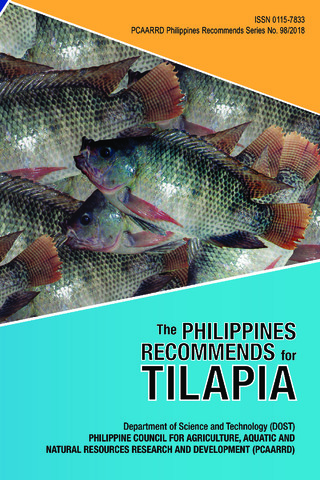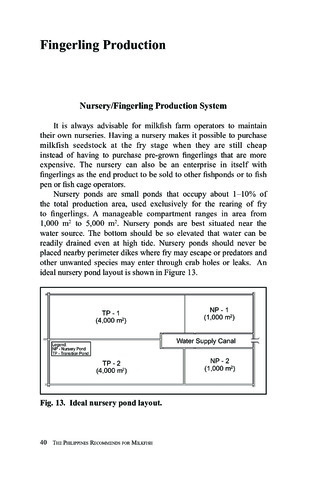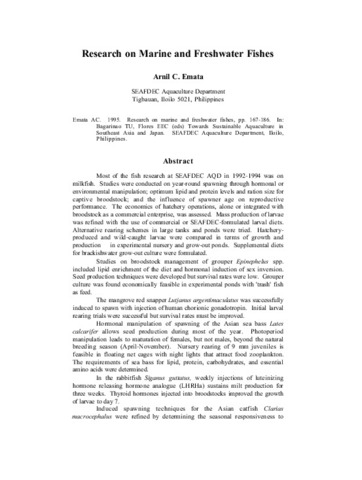Quantitative and qualitative analyses of the bacterial microbiota of tilapia (Oreochromis niloticus) cultured in earthen ponds in the Philippines
- Global styles
- MLA
- Vancouver
- Elsevier - Harvard
- APA
- Help

閲覧/開く
日付
2015Page views
4,465ASFA keyword
AGROVOC keyword
Taxonomic term
Metadata
アイテムの詳細レコードを表示する
Share
抄録
The quantity and composition of the bacterial microbiota in the rearing water, sediment, gills and intestines of tilapia Oreochromis niloticus collected every 2 weeks from Day 30 to Day 120 after stocking for grow-out culture in 6 earthen brackish water ponds in the Philippines were examined. The total heterotrophic aerobic bacterial counts obtained in the water, sediment, gills and intestines of tilapia ranged from 103 to 104 c.f.u. ml−1, 103–105, 105–107 and 104–107 c.f.u. g−1, respectively. In terms of composition, a total of 20 bacterial genera and 31 species were identified with the preponderance of gram-negative bacteria constituting 84% of all bacterial isolates examined. Aeromonas hydrophila, Bacillus spp., Plesiomonas shigelloides, Shewanella putrefaciens, Pseudomonas fluorescens, Staphylococcus spp. and Vibrio cholerae were the dominant bacteria identified in the gills and intestine of tilapia. These bacteria also dominated in the pond sediment and rearing water, except for the nil isolation of S. putrefaciens and V. cholerae in the water samples examined, indicating that resident bacteria in the pond water and sediment congruently typify the composition of bacterial microbiota in the gills and intestine of tilapia which under stressful conditions may propel the ascendance of disease epizootics.
Suggested Citation
Pakingking, R. V., Jr., Palma, P., & Usero, R. (2015). Quantitative and qualitative analyses of the bacterial microbiota of tilapia (Oreochromis niloticus) cultured in earthen ponds in the Philippines. World Journal of Microbiology and Biotechnology , 31(2), 265-275. https://doi.org/10.1007/s11274-014-1758-1
Type
ArticleISSN
0959-3993; 1573-0972Collections
- Journal Articles [1258]
Related items
Showing items related by title, author, creator and subject.
-
Series: Philippines Recommends Series; No. 98/2018
The Philippines recommends for tilapia
The Tilapia Technical Committee 2017 (DOST-PCAARRD, 2018)Tilapia is one of the most commercially important commodities in fisheries and aquaculture. Although tilapia is relatively easy to propagate and culture, the Philippine tilapia industry needs the necessary boost in the ... -
[The Philippines recommends for milkfish:] Fingerling production
Yap, Wilfredo G.; Corre Jr., Valeriano L.; Garcia, Yolanda T.; Salayo, Nerissa D.; The Milkfish Technical Committee 2016 (DOST-PCAARRD, 2016) -
Research on marine and freshwater fishes
Emata, Arnil C. (Aquaculture Department, Southeast Asian Fisheries Development Center, 1995)Most of the fish research at SEAFDEC AQD in 1992-1994 was on milkfish. Studies were conducted on year-round spawning through hormonal or environmental manipulation; optimum lipid and protein levels and ration size for ...






